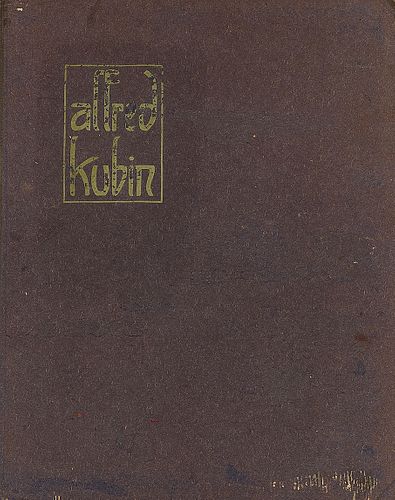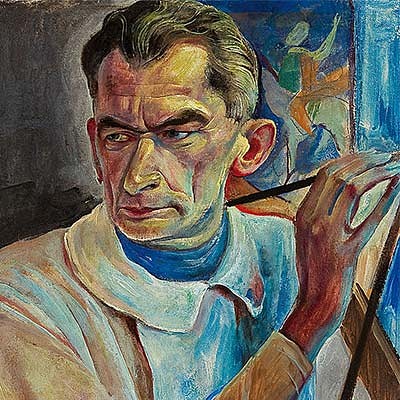ALFRED KUBIN* (Leitmeritz 1877 - 1959 Wernstein am Inn)
Lot 107
Estimate:
EUR€2,000 - EUR€4,000
$2,173.91 - $4,347.83
Absentee vs Live bid
Two ways to bid:
- Leave a max absentee bid and the platform will bid on your behalf up to your maximum bid during the live auction.
- Bid live during the auction and your bids will be submitted real-time to the auctioneer.
Bid Increments
| Price | Bid Increment |
|---|---|
| EUR€0 | EUR€10 |
| EUR€100 | EUR€50 |
| EUR€700 | EUR€100 |
| EUR€1,000 | EUR€200 |
| EUR€3,000 | EUR€300 |
| EUR€3,600 | EUR€400 |
| EUR€4,000 | EUR€500 |
| EUR€7,000 | EUR€1,000 |
| EUR€16,000 | EUR€2,000 |
| EUR€30,000 | EUR€3,000 |
| EUR€36,000 | EUR€4,000 |
| EUR€40,000 | EUR€5,000 |
| EUR€150,000 | EUR€10,000 |
About Auction
By Widder Auctions
Nov 28, 2022
Set Reminder
2022-11-28 10:00:00
2022-11-28 10:00:00
America/New_York
Bidsquare
Bidsquare : Viennese Art Nouveau, Expressionism, Modern Art
https://www.bidsquare.com/auctions/widder-auctions/viennese-art-nouveau-expressionism-modern-art-10414
Widder Auctions office@widderauktionen.com
Widder Auctions office@widderauktionen.com
- Lot Description
ALFRED KUBIN*
(Leitmeritz 1877 - 1959 Wernstein am Inn)
Hans von Weber Folder, 1903
43.5 x 35 cm
Complete folder with 15 facsimile jumps after works by Alfred Kubin, published by Hans von Weber, Munich 1903
provenance: private collection Vienna
ESTIMATE #Euro 2.000 - 4.000
STARTING PRICE #Euro 2.000
In 1898 Kubin went to Munich, studied at the academy with Nikolaus Gysis and continued his education autodidactically. His encounter with the works of Ensor, Klinger, Munch and Redon was decisive. In 1902 Kubin had his first exhibition in Berlin. The poet Max Dauthendey and the collector and publisher Hans von Weber became important patrons. The publication of the Weber-Mappe in 1903 brought the breakthrough. In 1904 Kubin was represented at the Secession exhibition. He met Fritz von Herzmanovsky, with whom he had a lifelong friendship, and established contacts with important Expressionist artists. In 1910, the banned scandalous play by the psychiatrist and writer Oskar Panizza enticed Kubin to illustrate "Das Liebeskonzil," a private print of the "Gesellschaft der Muenchner Bibliophilen." In 1912 he began working for the newly founded "Simplicissimus". During the First World War, Kubin occupied himself with psychoanalysis and philosophy. In 1921 he had his first retrospective. He produced lithographs and was also active in literature. Works in magazines and illustrations for literary figures followed. In 1909 he founded the Neue Kuenstlervereinigung Muenchen (N.K.V.M.) together with, among others, Wassily Kandinsky, Alexej von Jawlensky, Adolf Erbsloeh, Gabriele Muenter, Marianne von Werefkin and Karl Hofer. In 1911, the N.K.V.M. gave rise to the editorial team of the Blauer Reiter, in whose second exhibition, which included only graphic works, Kubin participated in 1912. He illustrated some 60 books, including works by Dostoevsky, Oskar Panizza, Edgar Allan Poe and Elias Canetti Kubin corresponded with Karl Roessing, Hermann Hesse, Hans Fronius and Otto Coester. In the 1920s, on the occasion of literary evenings, he frequented the home of Otto Bamberger, an entrepreneur, art collector and Bauhaus supporter who was a friend of his and who also acquired graphic works by Kubin. From 1930 Kubin was a member of the Prussian Academy of Arts in Berlin. In 1949 he became a member of the Bavarian Academy of Fine Arts. Kubin was also a member of the Prague Secession. In 1931 Kubin produced the stage design for Richard Billinger's drama Rauhnacht at its premiere in 1931 at the Munich Kammerspiele, directed by Otto Falckenberg. During the National Socialist era, 63 of his works were defamed as "degenerate art" and confiscated. The design of his grave site was created by the sculptor Karl Prantl. In 1955 Kubin bequeathed his estate to the Republic of Austria in his will. After his death, this was divided between the Albertina and the Upper Austrian State Museum. Alfred Kubin was a cousin of the art historian Otto Kletzl.
PLEASE NOTE:
The purchase price consists of the highest bid plus the buyer's premium, sales tax and, if applicable, the fee of artists resale rights. In the case of normal taxation (marked #), a premium of 24% is added to the highest bid. The mandatory sales tax of 13%, for photographys 20%, is added to the sum of the highest bid and the buyer's premium. The buyer's premium amounts to 28% in case of differential taxation. The sales tax is included in the differential taxation. - Shipping Info
-
We will send you the invoice shortly after the auction. As soon as we have recieved the amount, the art can be picked up at Johannesgasse 9-13, 1010 Vienna. Please note that the buyer is responsible for pick-up and shipping of the lot. Should you wish to ship your items, please contact: Mailboxes Email: oper@mbe-co.at Tel: 01 5128855 Please note that storage fees may apply, should the pieces not be picked up within 14 days after invoicing for domestic and 28 days for international transportation. Our team will be happy to assist you with any further information at office@widderauktionen.com or at 0043 676 555 66 10.
-
- Buyer's Premium



 EUR
EUR CAD
CAD AUD
AUD GBP
GBP MXN
MXN HKD
HKD CNY
CNY MYR
MYR SEK
SEK SGD
SGD CHF
CHF THB
THB






























